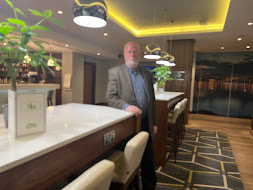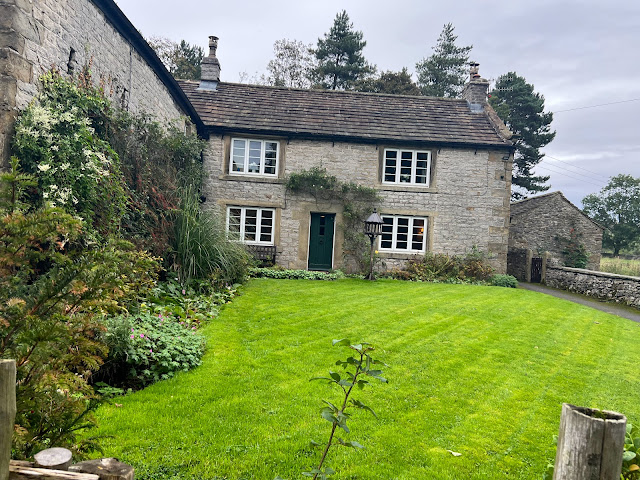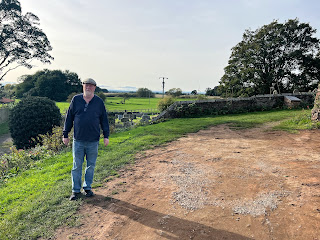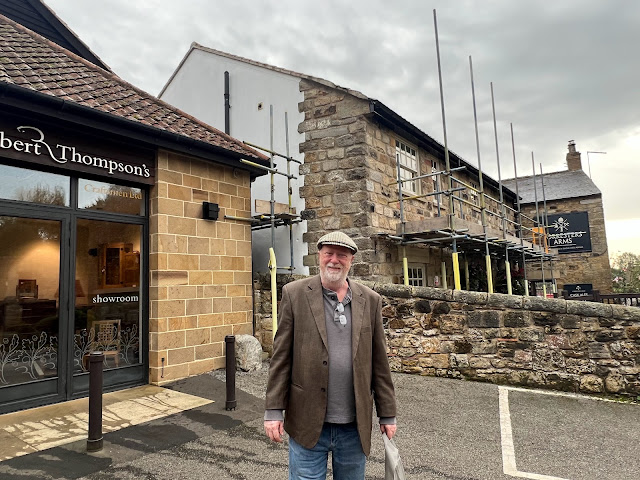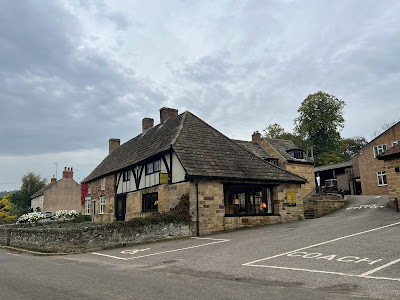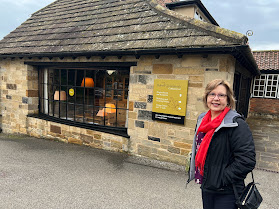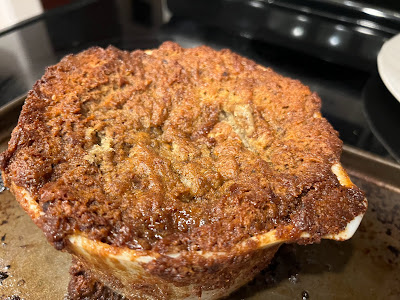 |
| Despite the mess and a few miscalculations, our pudding was tasty! |
The three words that we love to hear: sticky toffee pudding.
Now we can add another three words we may need to become more familiar with: English pudding basin.
As noted in our last blog, "Sticky Toffee Pudding, Part I", we were introduced to this tantalizing toffee concoction during our trip to the UK in October. Once a curiosity, now a passion, we wanted to create some of this sweet, syrupy sensation at home. While perusing recipes on-line, a couple of familiar names popped up: Darren McCrady, The Royal Chef and Kate Middleton. The former provides the recipes and, as for the latter, we learned, via The Royal Chef, that sticky toffee pudding is Kate's favorite holiday dessert.
 |
| With the Royal Chef in 2013 |
 |
| Great recipes in Eating Royally |
I've met Darren McGrady, interviewing him when he came to Michigan back in 2013, and I have his first cookbook, Eating Royally. Unfortunately, the toffee pudding recipe is in a subsequent tome not in my possession, but, most conveniently, different versions are replicated in numerous places on-line. I chose one that had the less exotic ingredients (e.g.,dark brown sugar instead of Muscovado sugar) and looked the least complicated (Sticky Toffee Pudding, Darren McCrady, via PureWow).
 |
| Setting out ingredients, swapping dark brown sugar for Muscovado |
That is until I read the instructions to put a portion of the sauce into an English pudding basin.
Our kitchen is fairly well outfitted with various-sized pans and baking dishes (my husband, Chris, is the gourmet cook in the family), but it is void of any pudding basin, English or otherwise. The recommended substitute was a one-quart casserole. But was something lost in English-to-American pudding containers? The dish we had on hand seemed a bit small for the task (and, I do recall Chris saying - you can't go wrong going with a size up), but against all intuition and consultation, I chose the one-quart casserole.
 |
| Committing to the tiny dish |
 |
| Is this mixture in need of a pudding basin? |
I poured the sauce, into the "replacement basin", reserving some for the final topping.
Then I made the pudding - mixing up the remaining ingredients, ladling it all into the small casserole dish and covering the dish with parchment paper and aluminum foil. I set the oven to 350 degrees, my timer to thirty minutes and took a break.
 |
| Ready for the oven, but neither parchment nor foil could contain the pudding |
After that half hour interval, I learned, to paraphrase the famous quote from the movie, "Jaws", that I was going to need a bigger bowl.
Much of the pudding batter had spilled out into the oven and, aside from the mess, it took another half hour of baking before I could stick a knife in the middle and bring it out clean.
Aside from the excessive spillage and the need to overcook the pudding, it didn't turn out bad at all. While it was still warm, I scooped a few cups into a bowl, and topped with remaining sauce and homemade whipped cream (which I executed flawlessly, may I add!).
 |
| Pouring sauce over pudding |
 |
| Messy and overcooked, but still "yum" |
See our video on YouTube to see the final results: Sticky Toffee Pudding! - YouTube
Sticky Toffee Pudding Post Mortem:
Since this baking challenge, I have found a few items to aid in my defense of not quite" sticking the landing" of my first sticky toffee pudding.
From the BBC Travel article, "The contentious origins of England's famous pudding", it informs us that, "perfecting the recipe isn't something you pick up overnight".
Comforting words to repeat while scrubbing out a layer of baked-on pudding from the bottom of the oven.
And, what about the English pudding basin? Is there more to that story? Or, more precisely, more to the English pudding basin?
According to Cooks Info, I offer the following evidence to support my case:
"Pudding basins have caused something of a problem with regard to their size - a bit of confusion that needs to be unravelled. . .if puddings, savoury or sweet, are something you plan on adding to your bag of cooking tricks, it can be useful to have a few sizes."
Well, perhaps that's not the "smoking gun" to explain the "sticky pudding knife", but it is a cautionary tale for those who of us who plan to add more puddings to our "cooking tricks".
To continue our sticky toffee pudding endeavors, we agree, practice makes perfect. But whether to use a casserole dish or basin is still up for debate. In any event, one thing we are most certain of, the proof will be in the pudding!






